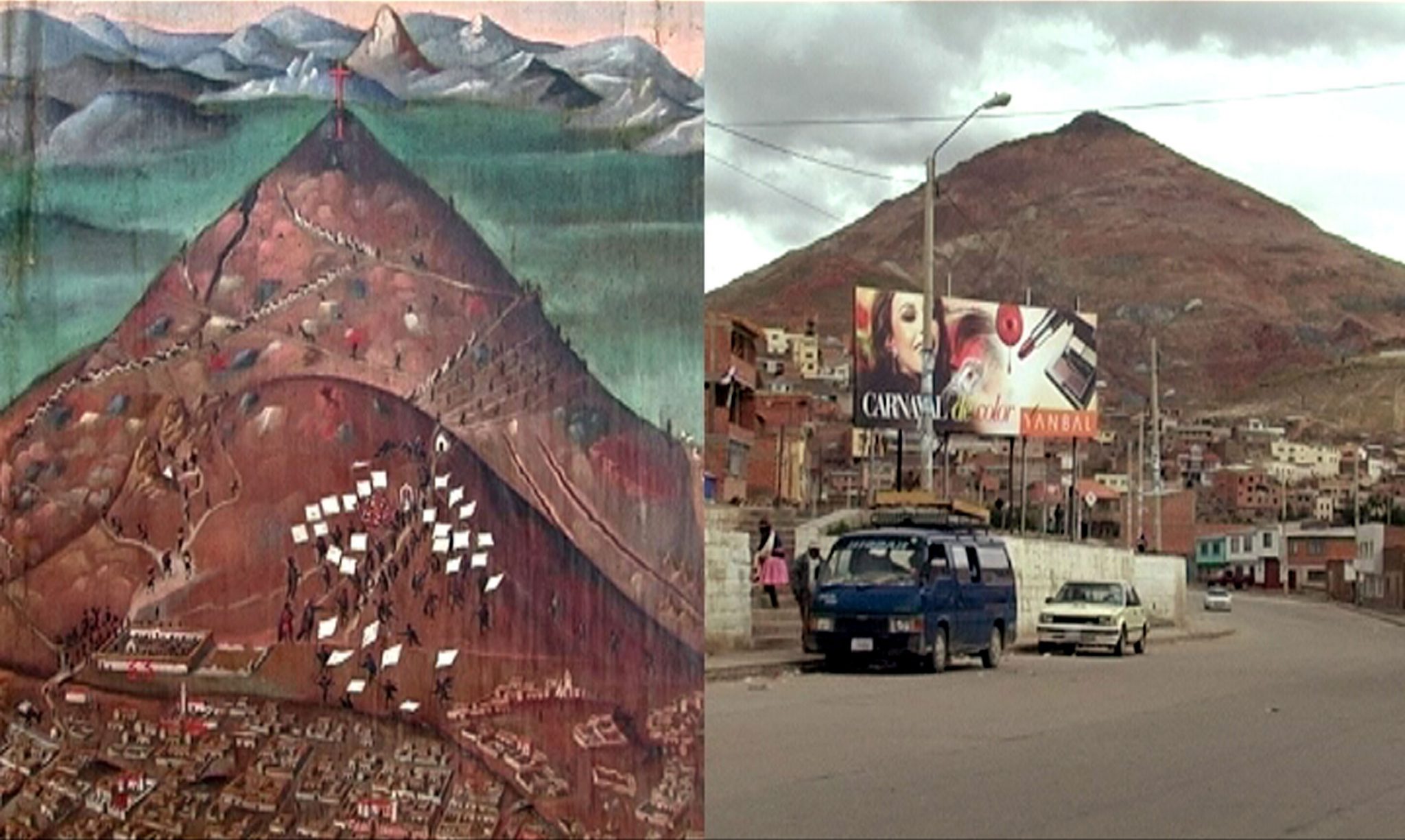Harun Farocki is interested in simulacra and this is particularly apposite on the Caminito of La Boca alongside the Fundación Proa. Here kitsch papier-mâché models of Carlos Gardel and the Peróns lean over rickety balconies.
A real-life Diego Maradona lookalike gets riled when I sneak a photograph of him.
There are five video installations on display. Eye/Machine II (2002) is a double projection that revisits mensch machine/war technology from 1942. Incredible footage only made public in 1991 shows the attack view from cameras mounted on blitzkrieg-era bombs. These experiments are now harnessed benignly in computer game designs but also in a more malignant fashion as with current drone attacks.
Farocki, as a German, explicitly links the Nazi past and its complicity with today’s dehumanised violence. His antiaesthetic take on progress is no Kraftwerk-style hymn to a planet of vision. Workers Leaving the Factory in Eleven Decades (2006) features a row of 12 TV sets on the floor. You imagine Farocki considering: how has the lot, the reality, of the poor worker been portrayed in the movies down through the years? Has their image improved? The cinematic shorthand for worker is a mass of them leaving the factory. That’s the reality, says Farocki, that’s all cinema can say about them. Those shufflers from Metropolis (1927) are still schlepping in and out. Farocki makes you squat to view. As you should – do a bit of work. This is not his most subtle piece. Paul Schrader’s more thoughtful, more insightful Blue Collar (1978), unsurprisingly, isn’t featured among the artist’s selections.
Serious Games III: Immersion (2009) sees Farocki filming traumatised US servicemen from Iraq reliving their hells with the help of computer VR. The prim professorial psychologists seem indifferent to the ironies around the use of this technology that arguably got these poor grunts into such desperate straits in the first place. Farocki visually quotes Don McCullin’s famous shot of a Vietnam veteran with the thousand-yard stare. Here we see a real-time, real-life vet with his white knuckles reliving his grim memory and gripping a joystick instead of a rifle.
The Silver and the Cross (2010) is another two-screen work, this one analysing a painting from 1758 by the Peruvian Gaspar Miguel de Berrío. The projection captures silver mining at the time and is contrasted with footage of the town of Potosí today. What remains, we learn, is the stuff of the rich. Their houses are the only ones still standing. The workers and their houses are dust. The Spanish colonisation, the large- scale genocide, is referenced – we remember again that Farocki is German. The nightmare of history is that all we can learn of the past, of the poor masses, is what we see left by the rich.
Parallel (2012) is a visual essay on the history of computer-generated images. We get trees and clouds and grapes so real the birds come and peck. We are back to trompe l’oeil and Zeuxis again in this 30-year development from Pong to the hyperreality of Lionel Messi videogames. Maradona versions are now old hat. Farocki, like Hans Haacke, is the artist as pedagogue. His work has a target, and these polemical works aim, as with Lacan’s thinking on the Zeuxis myth, to find what is hidden, to uncover, to score.
This article originally appeared in the April 2013 issue.
